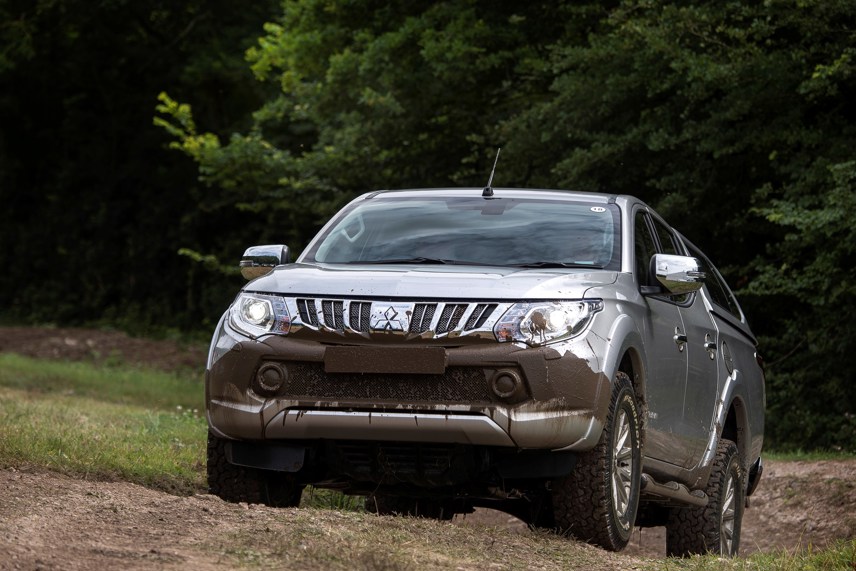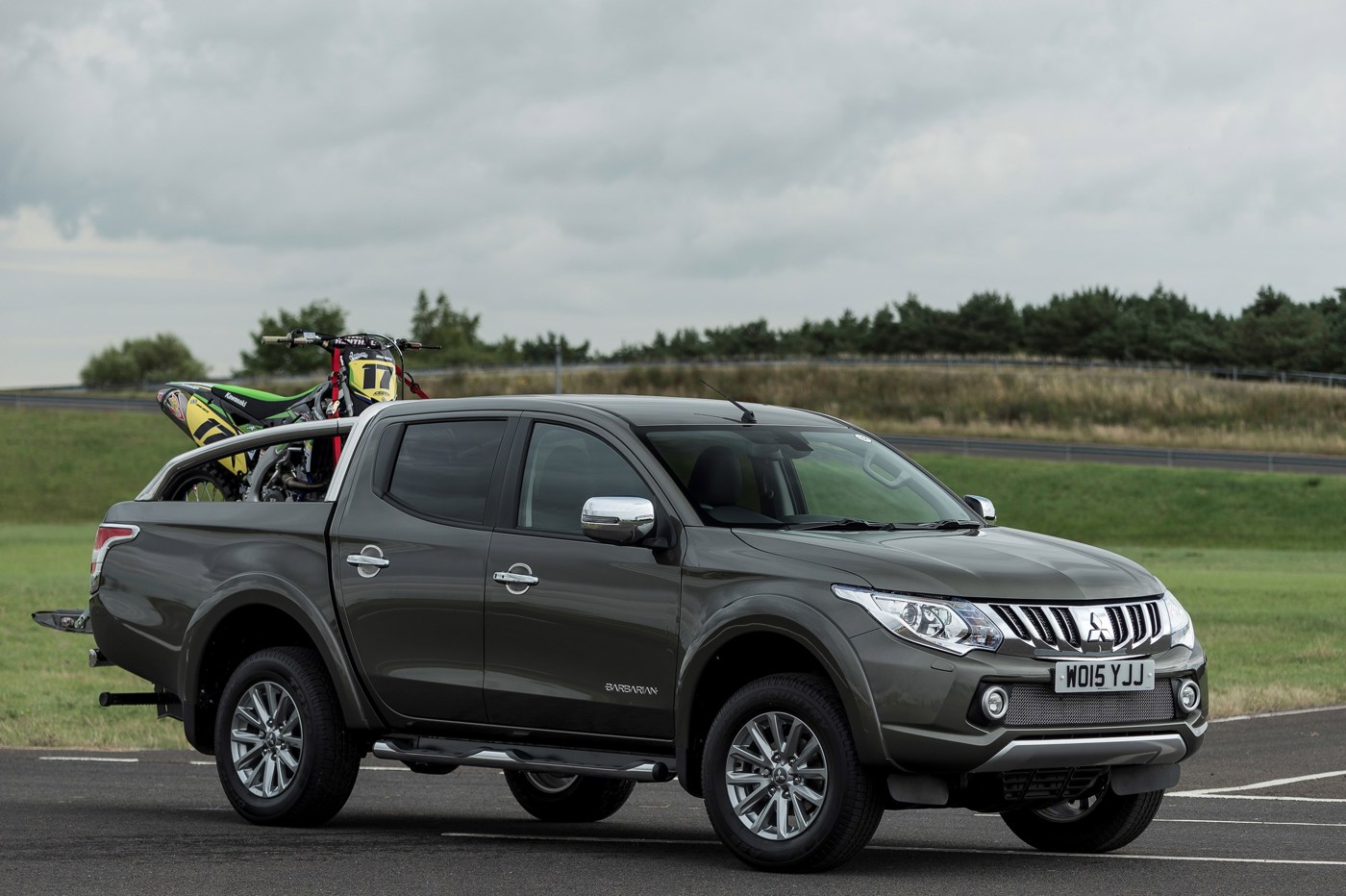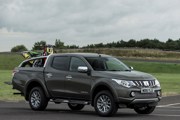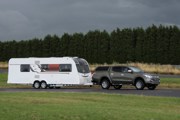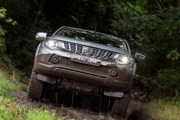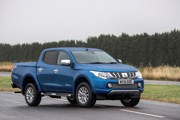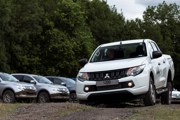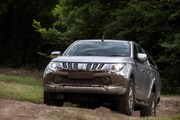Review
When the Mitsubishi L200 was last relaunched back in 2006, it came as something of a shock to the macho world of four-wheel drive trucks.
Whereas all the offerings in the sector, including the then current L200, were almost bursting at the seams with testosterone, the new contender sported a softer – dare we say – more feminine look. It didn’t go down too well with certain buyers – but, nevertheless, between 2007 and now, the L200 still topped the sales chart in the sector.
Fast forward to 2015 and, while the fifth-generation model, due to be launched in the UK in September, gives a nod to its predecessor, it’s back to the old blood and thunder we expect from a 4x4 in all other respects.
But it’s not just the looks that have changed. The new model, fresh from the nuts and bolts upwards, boasts a set of class-leading credentials that well and truly put this truck up to the next level of sophistication – best in class fuel efficiency, emissions and carrying capacity, to name just a few.
Significantly for fleets, only double-cab versions will be on offer at launch, with prices ranging from a competitive £19,749 to £25,199 ex-VAT. Fleets wanting single-cab versions will have to wait until early next year.
Four trim levels are on offer: 4Life, Titan, Warrior and Barbarian. And even the basic 4Life variant, which will be the biggest fleet seller, offers a wide array of standard spec, including auto stop-start, seven airbags, colour-coded front bumpers, traction and stability control, trailer assist, remote keyless entry, cruise control, air-conditioning and Bluetooth connectivity.
Under the metal, various parts are made with high-tensile steel plates to reduce weight and make the vehicle tougher, while extra sound absorption and damping materials have been added at various points to make the L200 quieter.
The new model is powered by a completely new engine – a 2.4-litre unit offering 178bhp and 318lb-ft of torque.
It’s an aluminium block, which means less weight, a lower compression ratio and a fuel economy figure of 42.8mpg on the combined cycle, which is an impressive 20% better than the old model. This is better than existing rivals, with the Isuzu D-Max trailing at number two among the other major contenders at 38.7mpg and the Nissan Navara at the bottom of the list at 33.6mpg. Figures like this show just how fast things are changing in this sector and it will be interesting to see how the new Navara fares against the L200 when it arrives next year.
Emissions are lower, too, at 169g/km of CO2 against 192g/km for the D-Max and 222g/km for the Navara. The new engine also achieves a reduction in maintenance costs through the use of a timing chain that does not need to be replaced and with longer intervals between engine coolant changes, valve clearance and other inspections.
Power is transmitted either via a new six-speed manual transmission or five-speed autobox and changes between two- and four-wheel drive are made via a little dial on the centre console. All-wheel drive high can be selected on the fly, up to 62mph, but to change down into 4WD Low, the vehicle has to be stationary.
There’s certainly no shortage of grunt. We tested the L200 on an off-road course at the MIRA testing ground in Warwickshire and, despite plugging through deep rutted troughs, up impossibly steep hills and through a deep lake, the truck never once felt as though it might give up. Our instructor told us that, even in lowest gear, the powerplant was pumping out 3,571lb-ft of torque to each wheel.
Meanwhile, on the main road sections of our test, body roll had been virtually eliminated, while the truck tackled the fast corners with an aplomb that would have been impossible in the old model. My only gripe in the ride and handling department is that the long gear lever still made for rather rubbery changes, although, generally, handling was taut and pin-sharp.
Our test drives showed up the improvements in the cab too, of which there are many. It’s completely redesigned and has the longest interior length in its class, which in turn means plenty of legroom for both front and rear seat passengers. The seat shape has been updated, enabling drivers to maintain a natural driving position, even on winding roads, and reducing fatigue.
The surface area of the body mounts has been increased, bringing a reduction in vibration and enhanced ride comfort and quietness. The cab was a noticeably quieter place to be than most rivals. There are also some nice touches, such as a sunglasses holder in the roof and coffee cup holders both in the front and back. The steering wheel adjusts for reach and rake too, so just about every size of driver should find a comfortable position.
In the rear, the cargo width remains the same as the old model but the depth has been increased by 15mm to give a greater loading capacity. The tailgate is good and strong and the L200 can now carry and tow a combined weight of 4,090 tonnes, beating the D-Max, Toyota Hilux and Volkswagen Amarok.
Active stability and traction control with brake assist operates in both on and off-road situations and ensures maximum grip. Mitsubishi’s Anti-Lock Braking System features Electronic Brake-force Distribution (EBD) which adjusts the level of braking power applied, depending upon the load, between the front and rear wheels.
ESS (Emergency Stop Signal System) reduces the possibility of rear-end collisions during sudden braking by the rapid blinking of the hazard warning lamps to alert vehicles approaching from behind.
Verdict
Now with tough looks to match its admirable on and off-road performance, the L200 looks set to maintain its place at the head of the 4x4 truck table for a good many years yet.



